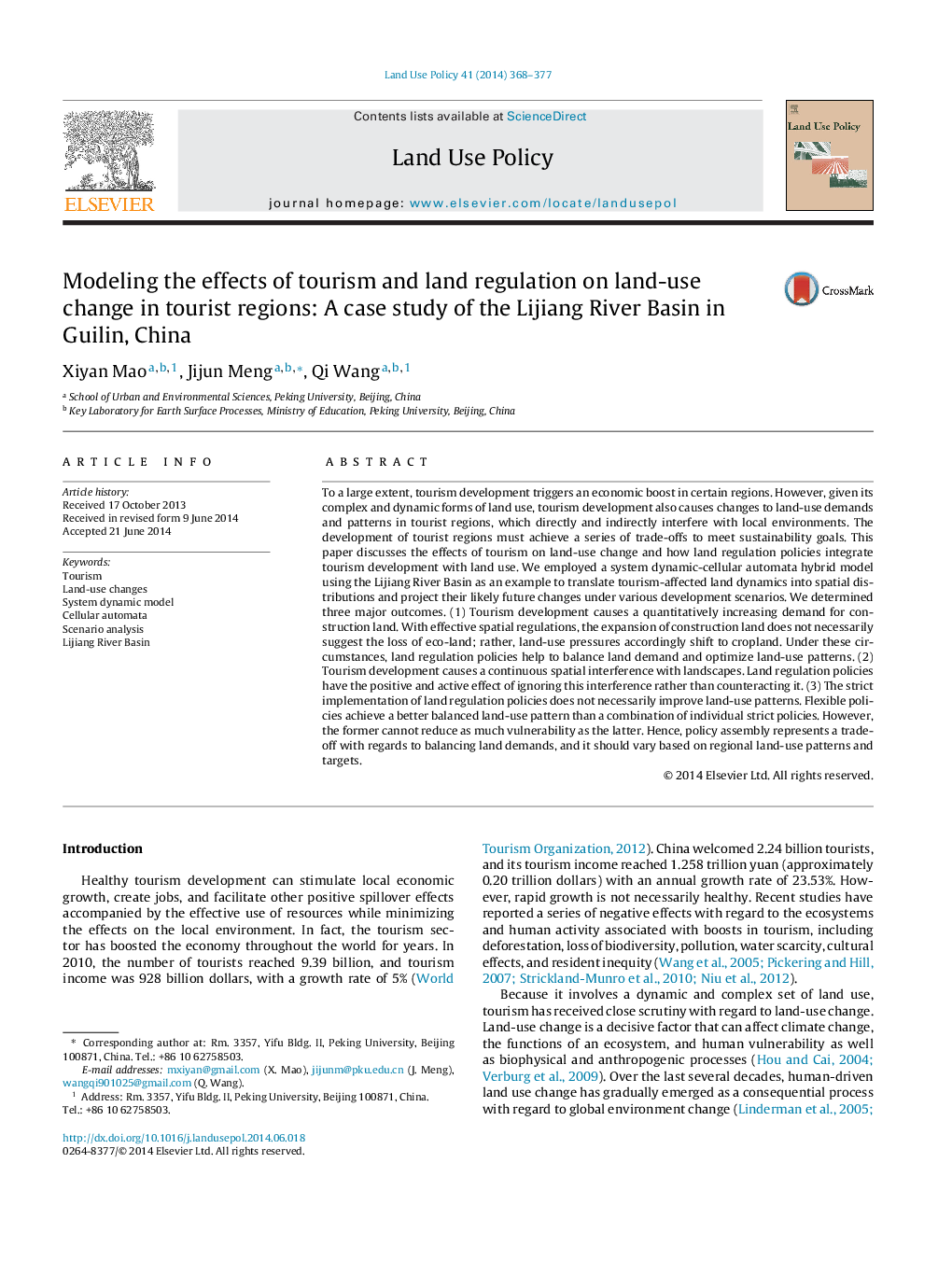| Article ID | Journal | Published Year | Pages | File Type |
|---|---|---|---|---|
| 6548550 | Land Use Policy | 2014 | 10 Pages |
Abstract
To a large extent, tourism development triggers an economic boost in certain regions. However, given its complex and dynamic forms of land use, tourism development also causes changes to land-use demands and patterns in tourist regions, which directly and indirectly interfere with local environments. The development of tourist regions must achieve a series of trade-offs to meet sustainability goals. This paper discusses the effects of tourism on land-use change and how land regulation policies integrate tourism development with land use. We employed a system dynamic-cellular automata hybrid model using the Lijiang River Basin as an example to translate tourism-affected land dynamics into spatial distributions and project their likely future changes under various development scenarios. We determined three major outcomes. (1) Tourism development causes a quantitatively increasing demand for construction land. With effective spatial regulations, the expansion of construction land does not necessarily suggest the loss of eco-land; rather, land-use pressures accordingly shift to cropland. Under these circumstances, land regulation policies help to balance land demand and optimize land-use patterns. (2) Tourism development causes a continuous spatial interference with landscapes. Land regulation policies have the positive and active effect of ignoring this interference rather than counteracting it. (3) The strict implementation of land regulation policies does not necessarily improve land-use patterns. Flexible policies achieve a better balanced land-use pattern than a combination of individual strict policies. However, the former cannot reduce as much vulnerability as the latter. Hence, policy assembly represents a trade-off with regards to balancing land demands, and it should vary based on regional land-use patterns and targets.
Related Topics
Life Sciences
Agricultural and Biological Sciences
Forestry
Authors
Xiyan Mao, Jijun Meng, Qi Wang,
